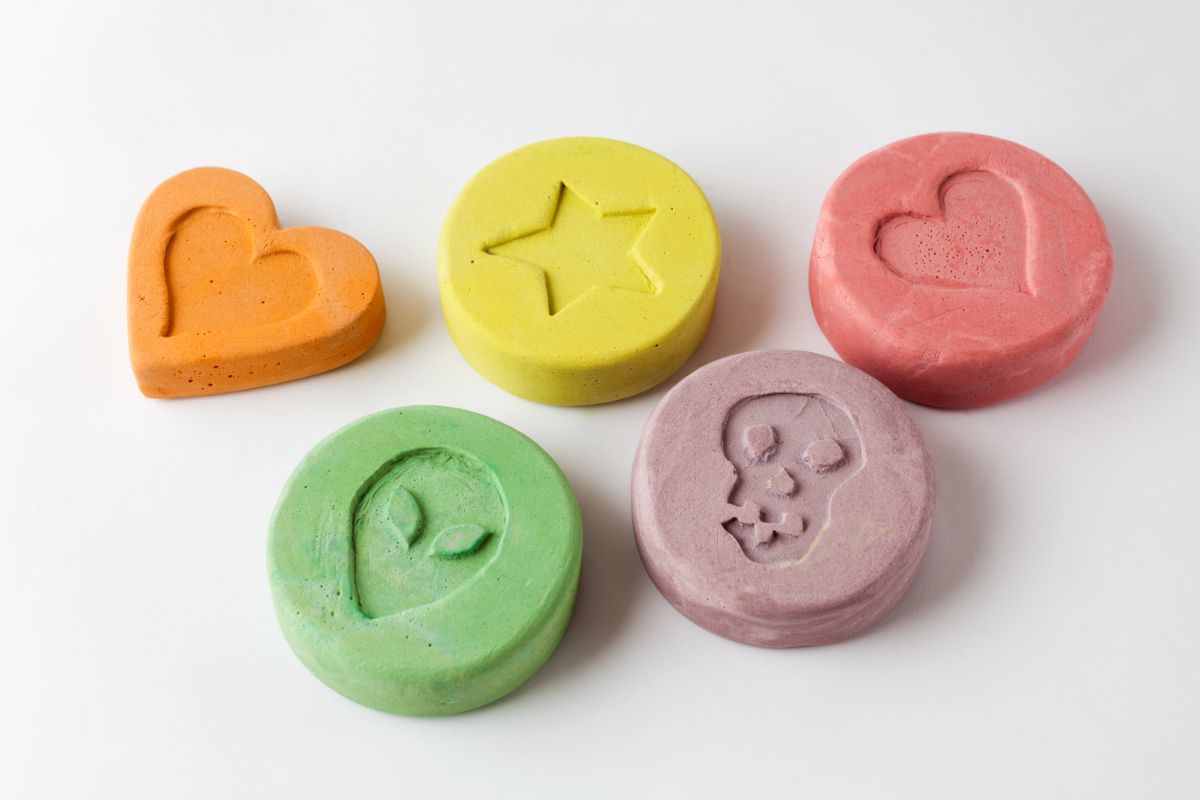
Reactive Attachment Disorder: What It Looks Like
What is reactive attachment disorder? This very rare but serious condition occurs when a young child or infant does not connect or establish a solid relationship with parents or primary caregivers.
Children with this disorder may have grown up in an environment with a lack of nurturing, affection, or stability. Chaotic and dysfunctional homes are breeding grounds for reactive attachment disorder.
There are various signs and symptoms to watch for in determining whether or not a child has reactive attachment disorder:
- Unexplained withdrawal, fear, sadness, or irritability
- Sad and listless appearance
- Not seeking comfort or showing no response when comfort is given
- Failure to smile
- Watching others closely but not engaging in social interaction
- Failing to ask for help
- Failure to reach out when picked up
- No interest in playing peekaboo or other interactive games
The symptoms appear in early childhood, usually before age 5. Without treatment, reactive attachment disorder can continue for several years and may have lifelong consequences. Researchers say that some children and teenagers with reactive attachment disorder may show callous, unemotional traits that can include behavior problems and cruelty toward animals or people.
It’s important for parents and family members to understand what it is to live with a child or teen with reactive attachment disorder. From diagnosis to treatment, there are steps to take and situations to handle that go beyond other mental health issues that affect children and teens. The first step is getting a diagnosis.
Diagnosis
It will take a licensed medical professional to reach a definitive diagnosis of reactive attachment disorder. Doctors at the Mayo Clinic recommend the following:
A pediatric psychiatrist or psychologist can conduct a thorough, in-depth examination to diagnose reactive attachment disorder. The evaluation may include the following:
- Direct observation of interaction with parents or caregivers
- Details about the pattern of behavior over time (parents should keep a journal or diary to detail behavioral events)
- Examples of the patient’s behavior in a variety of situations
- Information about interactions with parents or caregivers and others (this information should also be tracked in a journal)
- Questions about the home and living situation since birth
- An evaluation of parenting and caregiving styles and abilities
Your child’s doctor will also want to rule out other mental health disorders and determine if any other mental health conditions co-exist, such as
- Intellectual disability
- Other adjustment disorders
- Autism spectrum disorder
- Depressive disorders
Your doctor may also use the diagnostic criteria for reactive attachment disorder in the DSM-5, published by the American Psychiatric Association. Diagnosis isn’t usually made before 9 months of age, but signs and symptoms typically appear before the age of 5 years.
DSM-5 Criteria include the following:
- A consistent pattern of emotionally withdrawn behavior toward caregivers, shown by rarely seeking or not responding to comfort when distressed
- Persistent social and emotional problems that include minimal responsiveness to others, no positive response to interactions, or unexplained irritability, sadness or fearfulness during interactions with caregivers
- Persistent lack of having emotional needs for comfort, stimulation and affection met by caregivers, or repeated changes of primary caregivers that limit opportunities to form stable attachments, or care in a setting that severely limits opportunities to form attachments (such as an institution)
- No diagnosis of autism spectrum disorder
As you can see, the diagnosis of reactive attachment disorder is often more about ruling out other illnesses or mental health conditions. Because reactive attachment disorder is a relatively new diagnosis, the process for achieving diagnosis is limited to the above. The primary concern of the diagnosing physician is determining how the care of the child during the crucial and formative toddler years may have led to reactive attachment disorder.
Once the diagnosis has been given, parents and family members need to learn how best to manage a child with reactive attachment disorder.
Daily Living
The teen with reactive attachment disorder can be sweet and charming one minute, aggressive and violent the next. It is not easy for a family to manage a teen with this disorder, and siblings or other family members in the household must also learn to deal with the actions of the affected teen.
Parents
Teens with reactive attachment disorder act very differently outside the home. Teachers and friends may describe the teen as “charming” or “delightful” even though things in the home are radically different. Parents can begin to feel isolated, scared that others won’t believe them when they describe what the teen is like to deal with at home.
These teens also have boundary issues and therefore are socially indiscriminate. Because they have a stunted connection to their parents and/or caregivers, they may participate in what is known as mommy or daddy shopping – trying to hug total strangers to see if they react the way the child wants. Regardless of the amount of love poured into the teen, he or she may not respond to it.
Parents of kids with reactive attachment disorder feel tremendous guilt. The doctors are telling them that this is their fault. They, as parents, made choices in the child’s formative years that have radically altered the child’s personality, possibly for life. These parents are constantly second-guessing every move they make, and it is extremely tiring.
For parents of adoptive children with reactive attachment disorder, there is a sense of helplessness. The damage was already done to the child, but the new parents are paying the price. It is only with counseling and treatment that adoptive parents can find help in determining the best way to help them bond with the child.
Siblings

Imagine being the sibling of a teen with reactive attachment disorder? The affected child is manipulative, easily triggered, can be aggressive, and has severe mood swings. This is particularly stressful for younger siblings who often look up to their older siblings as heroes or role models. Older siblings may come to resent or even hate the teen with reactive attachment disorder because the affected teen sucks up all the attention from the parents.
Siblings are often trapped in a continuous state of anxiety and watchfulness, fearful for their own safety and the safety of their parents. They’re often targeted with physical aggression and witness frightening situations. For many siblings, family life can be highly dysfunctional and confusing. This can lead to a warped view of normal family relationships with devastating, lifelong impacts. Siblings often struggle to differentiate the person from the disorder and come to hate their brother or sister who has reactive attachment disorder.
Siblings don’t live the carefree lives of their peers. They miss sports practice and music lessons when their sibling loses control. They can’t go on family vacations and outings are often cut short. Their treasures and toys are broken. Their allowance is stolen. For them, growing up can be less than ideal and full of heartache and challenges. The normalcy of everyday life has been taken from them – and they also lose their parents.
Many parents are so consumed with the minute-by-minute challenges of raising a child with reactive attachment disorder that they don’t recognize the impact on the child’s siblings.
Extended Family
For family members who don’t live in the home with the affected teen, they cannot comprehend what it is like for the parents and siblings of the affected teen. They don’t understand why the family cannot come to visit on the holidays or participate in family events like picnics or vacations.
Many family members may have the idea that the parents are simply not properly disciplining the child. Well-meaning suggestions of stricter rules or introducing physical punishments like spanking do not help the parents who are desperately trying to cope with the situation.
One thing that may be useful is to have a family meeting where the parents provide everyone with the medical information regarding reactive attachment disorder. Talking about it, explaining what it’s like to live with the teen, and explaining the options for treatment can help extended family members understand the disorder and encourage them to have more patience and compassion.
There can also be family members who don’t believe in mental illness or psychiatric health problems. They may stubbornly suggest that military school or a temporary boot camp is all the child needs to “get in line”. With these types of relatives, it’s essential that your child is never left alone with anyone who carries that mindset, or your child could be mistreated when he or she is triggered into bad behavior.
One of the key elements to productively managing a household and family containing a teen or child with reactive attachment disorder is to only expose the child to positive relatives who have a comprehension of the disorder and know how to react when the child acts out. Not having a family that educates its members and creates a stable environment can lead to complications.
Complications of Reactive Attachment Disorder
Physical, emotional, and social neglect put children with reactive attachment disorder at higher risk for complications in later childhood and adolescence. These complications may include
- Delays in developmental milestones – when a child does not have healthy relationships with parents and/or caregivers, developmental milestones may not be reached because of the lack of care and contact between the child and the primary caregiver(s)
- Delays in physical growth (which can be linked to eating difficulties) – children with reactive attachment disorder are often withdrawn, listless, and sad. They may make absolutely no effort to eat or drink due to their overwhelming depression
- Emotional problems, such as depression, anxiety, and anger management issues – these types of problems are to be expected when a child grows up without any example of proper love and care between dependents and caregivers. The child with reactive attachment disorder will have extremely low self-worth and increased fear
- Eating disorders – as children with reactive attachment disorders become adolescents, there is a higher risk of eating disorders as they may still be searching for the parent figures they want and decide that they must be perfect in appearance in order to attract people who might fill those roles
- Drug and alcohol abuse and dependency – substance abuse and dependency are always a risk with patients who suffer from depression and anxiety. Children or teens with reactive attachment disorder who suffer from depression and/or anxiety are at risk of self-medicating with drugs or alcohol. They become overwhelmed by negativity and try to numb the pain
- Trouble in school (learning and/or behavioral) – students with reactive attachment disorder are easily triggered. A bad grade or an unfortunate comment from another student or a teacher could result in an explosive reaction that could be violent in nature. Students with reactive attachment disorder may also have academic difficulties due to not reaching milestones at the appropriate time intellectually
- Problems in relationships – this complication is the most common among children or teens with reactive attachment disorder. Since they were never exposed to health child/caregiver relationships, they don’t know how to form healthy relationships with others
Being able to identify and deal with these complications is just one more part of the overall treatment plan for teens with reactive attachment disorder.
Treatment
While there is no standard treatment for reactive attachment disorder, any treatment plan should involve both the child and parents or primary caregivers. Goals of treatment are to help ensure that the child has a safe and stable living situation and develops positive interactions to strengthen the attachment with parents and caregivers.
Treatment strategies include
- Encouraging the child’s development by being nurturing, responsive and caring
- Providing consistent caregivers to encourage a stable attachment for the child
- Providing a positive, stimulating, and interactive environment for the child
- Addressing the child’s medical, safety, and housing needs
Other services that may benefit everyone involved include
- Individual and family counseling
- Education of parents, family, and caregivers about reactive attachment disorder
- Parenting skills classes
Regardless of the approach to treatment, it is essential that the child or teen be in therapy and/or family counseling to ensure that every resource available is being brought to bear in helping the child and family manage the condition.
Conclusion
If you know someone who exhibits the symptoms of reactive attachment disorder, or you have someone in your family with the disorder, don’t hesitate to ask for help. Get a diagnosis, get educated, and get treatment.
If you believe that your teen is dealing with reactive attachment disorder and needs help managing their disorder and understanding how to keep it from negatively impacting their lives and relationships, you have options!
Reach out to Beachside Teen Treatment Center in order to see how our facility can help your family!




